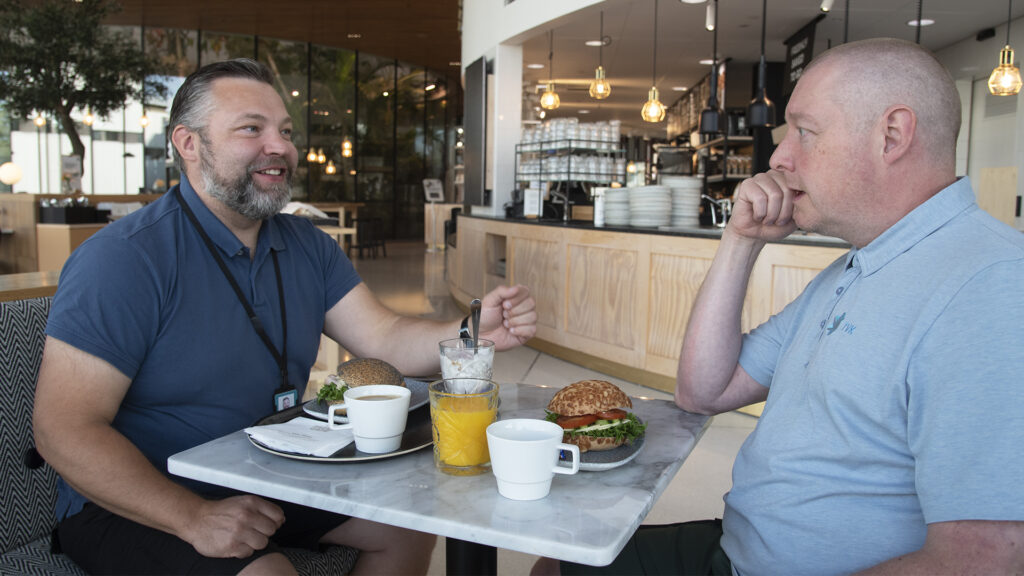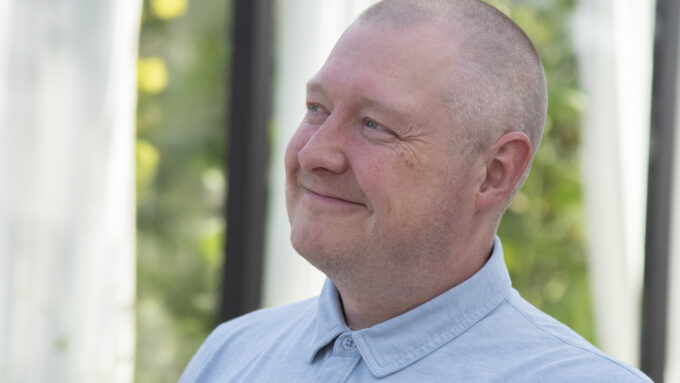Do you need an accident to put an end to your entire working career and are accidents the biggest reasons for losing healthy years of life? Statistics as measures of safety, careers and human life were discussed by database analyst Janne Sysi-Aho from the Accident Insurance Center TVK's research unit and RT's safety expert Henri Litma at the morning coffee table.

In Finland, all occupational accidents are comprehensively recorded in the insurance system, which is rare internationally. In addition to occupational accidents, TVK also statistics all occupational diseases of wage earners and insured entrepreneurs.
"Finland has an accurate and reliable system for monitoring accidents. So precise that it almost always has to be reminded when accident statistics are compared globally. That's why it's not worth making a direct comparison between different countries", Janne Sysi-Aho reminds at the beginning of the discussion.
"In some other country, you don't get information about accidents as well as here. Therefore, it can appear that there are more accidents in Finland, even though it is the exact opposite," Henri Litmanen continues.
An accident does not have to interrupt your entire working career
According to Sysi-Aho, sometimes too much emphasis is placed on the investigation of accidents in Finland. According to him, a broader examination of why careers are left unfinished in Finland is needed.
"Accidents play only a small part when a career is interrupted or changed to a new one. Health-based reasons affect it much more," he explains.
"If, for example, a person is about to retire early due to burnout, it should be investigated which factors are behind the burnout. And are there tasks for the person in which these factors do not appear. Even those exposed to musculoskeletal disorders can find a new job with a different way of working. The information does exist, now we just need to know how to make better use of it, so that people can be kept able to work," says Henri Litmanen.
Measures of human life
For a broader health-based review, there are many universally valid quantitative measures of human life and health. They are used to evaluate the factors that influence why healthy years of life are lost. And how much better health and more years of life can be achieved with various measures.
"The Daly method for evaluating the healthy years of life lost by the population is one such commonly used measure. It takes into account the effects of a hundred different diseases or injuries on mortality and morbidity by age, sex and region. Cardiovascular diseases, musculoskeletal diseases, respiratory diseases, mental health, stress and other psychosocial factors, among others, are taken into account in the assessment," says Henri Litmanen.
"In the Daly comparison, the Nordic countries are quite similar. The share of accidents is only about ten percent when looking at the reasons for losing healthy years of life. Absences caused by accidents represent only a small part of all staff absences, while the share of sickness absences is much higher," says Janne Sysi-Aho.
"When the review is expanded from the narrow review of accidents and occupational deaths, interesting differences are noticed within the country. For example, musculoskeletal disorders are more prominent in Southern Finland, while mental health problems are more prominent somewhere else," he continues.
"Accidents have many different variables that can have major financial consequences. In construction, accidents also account for a larger share of absences and exits from working life than in other industries. It may be that this is precisely why accidents are paid so much attention in the industry," Henri Litmanen reflects.
A path to valuable data
TVK monitors workplace accidents extensively throughout the country. In addition to that, it is good to have complementary smaller systems, because national accident information usually only becomes available after a delay.
"When information related to accidents can be collected quickly, it makes it easier to identify small emerging phenomena related to safety. Precisely those that can grow into big security threats later. With the help of the Reitti system, valuable safety data can be collected nimbly and quickly in order to prevent accidents", Janne Sysi-Aho praises RT's safety information reporting system of member companies that was introduced at the beginning of the year.
"Using the Reitti system, companies have the opportunity to monitor the accident situation and types of accidents in the construction industry better than before. Information on risks can be quickly provided, and thus with our own smaller data sample, TVK's wider data can be supplemented".
"The company can compare its own accident situation with other companies. Through the route, the company's safety awareness increases, they can better assess the risks of their own operations and implement measures in advance to prevent accidents," says Henri Litmanen.
"Attention should be directed more than at present to the prevention of serious accidents at work. Although they make up only a small part of all work accidents, they cause the majority of lost work inputs. It's good to know that there are different factors behind serious accidents that lead to death than in minor accidents," Litmanen emphasizes an important point.
Steady, slow, but permanent
"The best development of the accident frequency is a steady long decline in the curve describing the frequency. It shows that security is then regularly improved. It describes a change in the work culture, the operating methods then change for the better," Janne Sysi-Aho states.
The curve of the accident frequency in the construction industry has been steadily declining for a long time. While the accident frequency of RT's member companies was 2010 in 38, it is currently 17. Most of the hours under review come from RT's member field, while the majority of injuries come from other operators in the chain.
"The frequency of hired labor is roughly two hundred", Sysi-Aho guesses.
"In the national statistics of the construction industry, the pace of change is always slow. Accidents are reflected in the change in work, as pre-fabrication in factories has increased. The work has also become lighter, as a result of which accidents of the loading type have decreased. Movement, handling objects and hand tools are still emphasized in construction accidents," he continues.
Recession has also been reflected in the statistics in the past as a decrease in accidents. The good thing is that part of the decline in the recession will remain permanent. The recession is training the industry and those that survive it are more responsible companies than average. And such people traditionally also take care of their safety.
Coffee table discussions about well-being at work
Construction Industry RT's safety expert Henri Litmanen invites a group of people to the coffee table with him to discuss occupational well-being and safety in Finland. The first to sit on the other side of the table was Janne Sysi-Aho, a database analyst at TVK's Accident and Injury Center. He is a well-known speaker from several seminars in the construction industry, where accidents at work in construction have been discussed.
 Who sat at the table?
Who sat at the table?
Smell Janne Sysiaho, age 48, I have a BA in energy management. I live in Hattula. The family includes a wife and three daughters.
In my daily work lAt TVK, I conduct database analyzes related to work accidents and occupational diseases, design and implement statistical tools and provide user support. My job description includes all of TVK's more than 20 main industries, of which construction is one. At the moment, I am focusing on the preparation of analyzes and challenges in the health and safety sector.
In my free time I enjoy cycling and music. I'm part of a band that plays electronic music, where lately I've been playing drum machines.
What I would change: Positive issues could also be highlighted in connection with accident investigations. At the same time, we would like to remind you that accidents can happen even on sites where things are mostly handled correctly. And on the other hand, the fact that even if an accident happens on a construction site, it does not mean that everything was done wrong there.